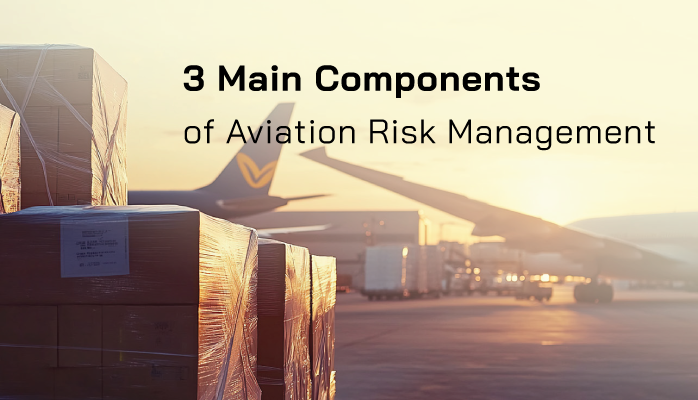Aviation Risk Management Requires a Safety Mindset

Aviation risk management is a vital part of being a well-rounded pilot. The safety mindset works best every time flying.
Although all components are important, perhaps the most vital of them all is understanding the importance of "aviation risk management."
The textbook definition of risk management is a decision-making process that relies on
- situational awareness,
- problem recognition, and
- good judgment
to reduce the risks associated with each flight.
What Are Three Risk Management Components?
Sound risk management is vital to a successful and safe flight for many reasons. The most important is that it helps create a mindset of proactivity, which is taking action before a hazard is presented. Proactive hazard management can help mitigate the risk of growing or even surfacing.
Since I am a pilot, I am going to explain the best mindset for being behind the controls when it comes to risk management.
There are three main components to risk management, all of which must be completed adequately throughout all phases of flight to ensure safety.
Related Aviation Risk Management Articles
- 4 Elements of Safety Risk Management (SRM)
- Difference Between Reactive, Predictive and Proactive Risk Management in Aviation SMS
- What Is the Modern Aviation Risk Management Cycle
Hazard Recognition in Risk Management
The first major component of risk management is the recognition of a hazard. This is the most important step. If a hazard is not identified, it will unquestionably grow and pose a safety risk to the flight, and can oftentimes become debilitating.
Having a proactive mindset in hazard identification scenarios is where risks can be eliminated before they appear. For example, if you know that you are going to begin your descent, enrich the mixture before the engine starts to run rough. Or if you pull the power out of the green and your engine is carbureted, apply carburetor heat before the ice begins to form in the venturi. This skill can be sharpened by constantly attempting to increase situational awareness in all phases of flight, especially the critical ones (takeoff and landing).
Hazard Analysis Required for Managing Risk
The second key component of risk management is an analysis of the hazard. Risk management is not called risk elimination for a reason. You will never be able to mitigate all of the risks associated with a flight. That’s why they pay pilots the big bucks (usually) to manage them all. It is of the utmost importance that you analyze which risks need immediate reactions, as well as what that reaction needs to be.
For obvious reasons, it is best to consider all possible reactions to a problem instead of impulsively reacting. Proactivity is reiterated here because it alludes to planning ahead and then reacting, which is the preface of the analysis component of risk management.
Have You Read
- From Reactive to Proactive Risk Management in Aviation SMS
- What Is Proactive Risk Management in Aviation SMS
- Proactive Risk Controls vs. Mitigative Risk Controls in Aviation SMS
Eliminating Hazard, Most Effective Form of Risk Management
This leads to the final component of risk management, which is elimination.
The correct action to risk is a vital part of the action as a whole. If you do not react correctly, the results can be devastating. A proactive mindset is also vital in this phase of managing risk for not only proper planning but also in taking control and solving the problem the right way, the first time.
You may not always have a second chance to try your hand at managing risk. For example, in 2015, TransAsia Airways Flight 235 lost an engine just minutes after takeoff. The captain’s infamous words before clipping a bridge and crashing into the Taiwanese river were "Wow, pulled back the wrong side throttle." Forty-three died that day when it could have been none; a morbid example of how important proper reaction is.
Risk Management Strategies Increase Successful Operations
If all three risk management components are successfully completed from the time the airplane leaves the hangar to the time it returns, you can be assured of a safe flight.
There are many ways to manage risks, just as there are many kinds of risks associated with any one flight. These risks affect the crew in every phase of the flight from preflight to shutdown. Having a proactive mindset from start to finish will help you be prepared for the unexpected.
Is your SMS implementation at risk of failure? This insightful and helpful Excel template helps you assess the risk to your SMS program.
Last updated in March 2025







